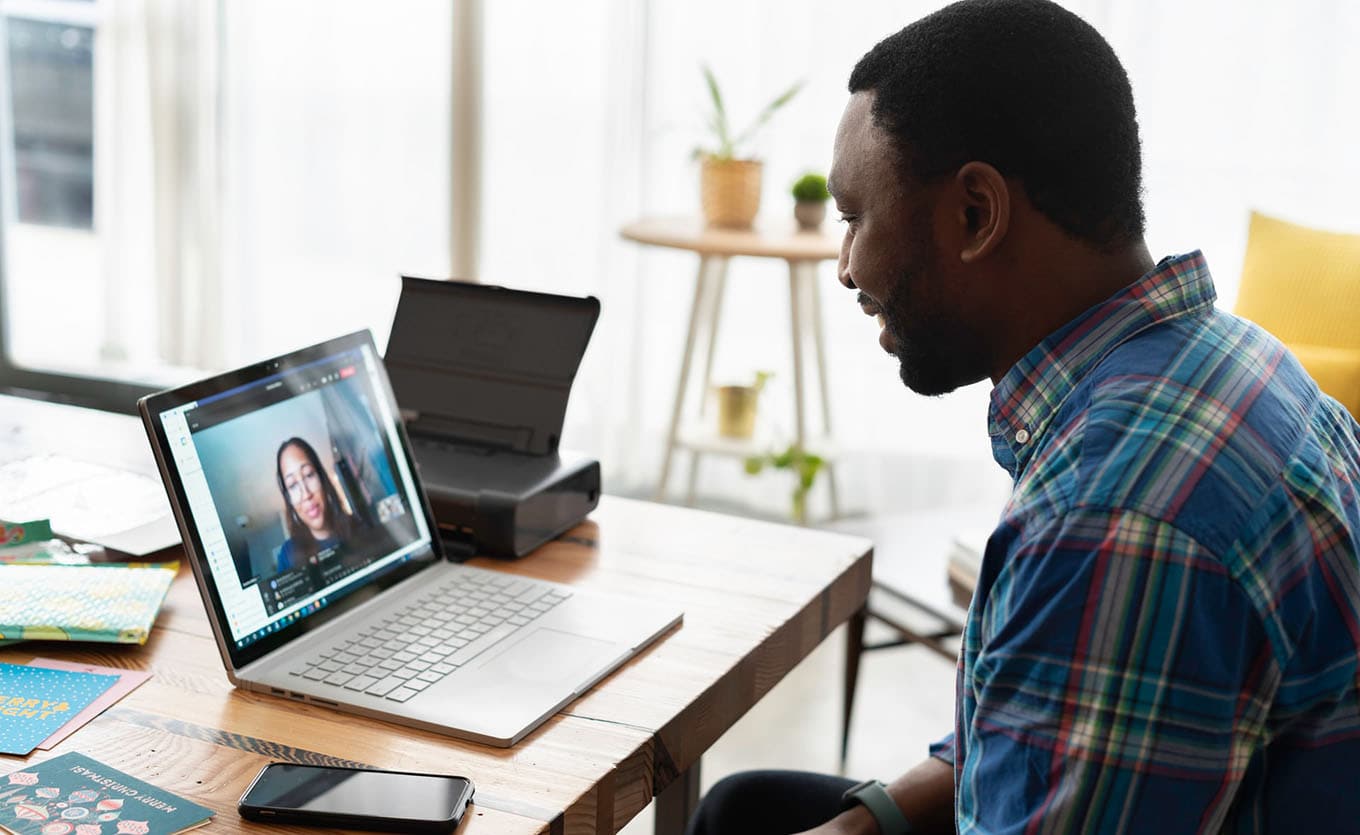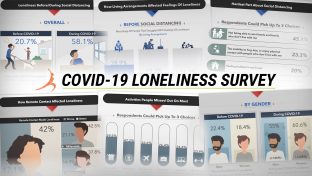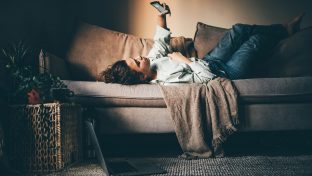Getting To The Heart Of Loneliness & Depression During COVID

Quarantine and social distancing, while necessary, have taken a toll on all of us, and have forever changed the landscape of the world we are living in. — Maja Kazazic
Before its emergence, those of us alive today had never previously lived through a global pandemic of COVID-19’s magnitude, and feelings of anxiety, fear, depression and loneliness became frighteningly commonplace.
- Loneliness increased 181% across the general population and only 6.5% of those surveyed reported having no difficulty with social distancing whatsoever.
- No one was truly immune from loneliness during COVID-19 — it affected people from all walks of life and for many different reasons.
- The COVID-19 pandemic impacted mental health in a variety of ways, causing people to experience anxiety, depression, sleep disturbances, generalized stress, a worsening of chronic conditions, and suicidal thoughts.
Struggling with loneliness or having a mental health crisis?
- Suicide Prevention Lifeline: 1-800-273-TALK (8255); Deaf or hard of hearing dial 711 before the number or connect via online chat
When news of COVID-19 first arose, few imagined that it would turn into a widespread pandemic shaping the course of our lives for the better part of two years — and beyond.
Change came swiftly in the form of school closures, mask mandates, and extended social distancing. Proms and graduations were canceled, weddings postponed, and the dating scene became all but nonexistent.
Humans thrive on social connection so it likely came as no great surprise when loneliness surged as a result of the drastic measures put in place to protect us.
During the first wave of the COVID-19 pandemic, we conducted an independent survey to learn how social distancing and lockdowns affected loneliness across all age groups.
The results were staggering.
As time went on, the pandemic’s global assault ebbed and flowed, vaccines eventually became available, schools reopened, and mask mandates lifted.
COVID and pandemic loneliness, however, continued to persist.
I spoke with mental health experts and those who struggled with loneliness during the pandemic to understand why it’s so pervasive and to share meaningful advice for how to cope.
Additionally, I also talked to mental health experts to learn more about their experience and the struggles they faced while providing mental health care during the pandemic.
Why Loneliness Became A Companion During COVID-19

Although loneliness is described as the discrepancy between the social interaction and relationships we desire versus those we have, it doesn’t necessarily result from solitude.
People can spend time alone without feeling lonely.
Statistics show that loneliness is common but for many, it emerged during the start of the pandemic because of the sudden decrease in social interaction they were able to have.
Our COVID-19 Loneliness Survey found that although 20.7% of people struggled with loneliness before the pandemic, 58.1% felt somewhat or much lonelier as a result of social distancing and shelter-in-place orders.
A Harvard report released one year after the pandemic began found that about 36% of Americans were struggling with “serious loneliness,” including 61% of young adults.
I spoke with Maja Kazazic, a mental health advocate with expertise in PTSD, anxiety, and depression. She told me:
“The bubble of fear, polarity, and restrictions to cultivate safety [during] COVID have resulted in rapidly [rising] rates of loneliness, especially for those without a strong support system.
Even for those that do have multiple strong relationships, quarantine and social distancing, while necessary, have taken a toll on all of us, and have forever changed the landscape of the world we are living in.”
I consider us to be lucky — if you can call it that — to have lived through a pandemic in modern society with access to technology that enables us to maintain social connections remotely.
“As social creatures, we are wired to belong. So to be removed and isolated from our tribe is an incredibly painful and damaging thing. Not everyone feels fulfilled by virtual connection,” Maja said.
“[The pandemic] has certainly increased the positive uses of technology; using video and chat platforms to connect deeply with loved ones, forcing us to get creative with ways to connect and stay connected from a distance,” Maja explained.
“However, these platforms cannot replace face-to-face interactions and quality time with loved ones,” she added.
I spoke with Jabran Kundi, who works as an editor for The Stock Dork.
“I didn’t think I would find myself lonely during the pandemic. As an introvert, the last thing I assumed I would miss would be meeting with people,” he said.
“It took me a long time to realize that even I, as probably everyone else, need daily human interaction. I was always feeling tired, didn’t have the right mood to do anything, and couldn’t even find the energy to reach out to someone,” Jabran admitted.
For some, loneliness during COVID emerged due to major life changes.
Deena Baikowitz is a coach, speaker, and comedian whose life was entirely uprooted by the pandemic.
“Since August 2020, I have been referring to myself as ‘a lonely single extrovert in exile in a global pandemic.’ Because of the pandemic, I was forced to leave my friends, and my beloved home, New York City, after 20 years,” she told me.
Deena moved to Toronto — alone — in October 2020, having just two friends in the city.
“By November 2020, the city went into complete lockdown for almost 9 months with severely high case rates,” she explained, adding the vaccine was not available until spring of 2021.
Single, without children, and working as a network coach, Deena said her former life revolved around events and conferences, workshops, socializing, dating, dance classes, comedy shows, and even just talking to strangers.
All of that constant activity came to an abrupt halt during the pandemic and following her relocation to a new city.
“I experienced the grief and pain of being cut off from everything and everyone familiar. I lived through the fear and anxiety of high case rates in both New York and in Toronto,” she explained, adding that it was “Horrible timing!”
Saba Harouni Lurie LMFT, ATR-BC, is the owner and founder of Take Root Therapy. She told me that people experienced pandemic loneliness for many different reasons.
Those who are single or live alone had “very limited social interaction, if any. It’s no surprise they were experiencing and reporting loneliness.”
This was true for my mother. Widowed for several years, she lived alone throughout the first year of the pandemic.
During that time, our family did its best to maintain social distancing to keep her as safe as possible — but she paid a very steep price: loneliness and isolation.
We talked regularly — just about every single day — but I rarely saw her in person and she lived just 20 miles away. In the spring of 2021, she finally sold her house and moved in with my family.
To say that it improved her disposition would be a gross understatement — her happiness was immediate and grew exponentially, and her stress became practically nonexistent.
But having family around isn’t necessarily a cure-all for everyone’s loneliness.
Saba noted that there was an increase in loneliness during the pandemic among those with partners or families.
“We look to different relationships to fulfill us in different ways, and not having access to these relationships can be very challenging and detrimental,” Saba explained.
Liz Miller can relate.
A teacher and content creator for GetSetUp, a learning platform for older adults, Liz told me that the social shift caused by the pandemic was a shock to her system. She explained:
“I suffered from a lot of anxiety and was barely sleeping. Despite having my boyfriend in the same house, I sometimes felt lonely. I missed the everyday interactions with random strangers on the bus or as I got my morning coffee.
I missed days out with my girlfriends to talk about things my boyfriend just can’t understand. People don’t think you can feel lonely with someone else around, but you can.”
“The hardest part was finding that sense of community again from within the walls of my apartment,” she observed.
“People tried to say video chat could replace in-person but let’s face it — that’s not a reality,” Liz said.
“I stared at a classroom full of black boxes of students who refused to talk. Conversations with friends didn’t flow since no one had done anything new. Everyone was at home doing more or less nothing.”
Christine Wang, the founder of TheSkiGirl, is a self-employed business owner who doesn’t work in a traditional setting.
“Pre-pandemic I often went to cafes and other coworking types of spaces to be around other people rather than working by myself all day,” she explained.
She told me that once those shops closed during the lockdown, she struggled with loneliness “caused by working by myself all day long and then spending most of my days alone because I was single at the time as well.”
“This wasn’t so bad in the early stages, but as the pandemic dragged on, the loneliness increased,” she said.
I spoke with Erika Wormeley, LPC (Licensed Professional Counselor) who specializes in anxiety, depression, and other mood disorders at Thriveworks in Fredericksburg.
“One of the most obvious trends related to loneliness is loss, and that has been discussed a great deal,” she said. “A less obvious trend that has emerged is the lonely work from home population.”
She continued:
“Initially, people loved it, staying in comfortable clothes, getting other things done when work is slow, it was great.
As the pandemic lingered on, and people have been at home for more than a year, it has become apparent that our colleagues play a bigger role in our social connectivity than most thought.
We don’t have lunch with our peers and talk about what we are binge-watching or reading. We aren’t chatting in the hallway, or joking with coworkers about things that only people doing that work would understand.”
She noted an additional cause of loneliness during the COVID-19 pandemic, one that’s not often considered: cutting ties with friends or family over vaccine, COVID, or political disagreements.
The Relationship Between Social Distancing & Loneliness
Social distancing impacted loneliness across the general population for many reasons.
Although much of the population did their part to halt the spread of COVID-19 by practicing social distancing and staying home, most people were not accustomed to living life this way.
Children and teens struggled with loneliness after being thrust into remote learning environments en masse, becoming separated from their friends at school, and having little to no contact with them in social settings.
Many adults transitioned from busy workplace environments to home offices and most experienced at least some degree of isolation from family members they didn’t live with.
Additionally, throughout the pandemic, hundreds of thousands of families in America could do nothing as loved ones became sick — or died — with quarantine remaining an ever-present specter looming in the shadows.
Living in quarantine has a stark impact on society at large.
A review of 24 studies on the psychological effect of quarantine found that some of the biggest stressors included infection fears, financial loss, worry over inadequate supplies, frustration, stigma, and quarantine duration.
Post-traumatic stress disorder (PTSD), anger, and confusion were also side effects of living in quarantine.
Healthcare workers were hit hard during COVID-19, as well.
For many, living and working during the pandemic led to somatization — when a mental state evokes physical symptoms in the body, such as pain or lethargy — along with sleep disturbances, depression, anxiety, and stress.
Quarantine loneliness and pandemic isolation extended to the elderly population — particularly those living in care centers.
As nursing homes and assisted living facilities faced complete lockdowns, their residents were denied in-person visits from loved ones for weeks that eventually grew into months.
After an extended nursing home stay due to a fall, my grandmother moved into an assisted living facility — about two weeks before it went into lockdown.
She barely had time to settle into her new home — one she faced with some trepidation to begin with — before she was completely cut off from her family.
That forced separation and social distancing kept her — and all of the other residents — safe from COVID-19, but it was a challenging time for them.
If and when a case emerged in the building, everyone in residence would begin a mandatory 14-day quarantine that meant staying in their rooms — even for meals — so they had no contact with anyone beyond their healthcare workers.
This ebbed and flowed over time as COVID-19 spiked regionally until case numbers waned enough to allow visitations — at first by appointment only and limited to 30 minutes, eventually opening up to an hour, and then without restriction.
Masks were a constant requirement, however — hugs and physical contact were not permitted.
Mask usage enabled the reopening of businesses and a return to a sense of normalcy with time, but even that had a striking effect on our socialization.
Brenda Billings Ridgley, the author of Lady and the Tribe: How to Create Empowering Friendship Circles, which was inspired in part by the pandemic and loneliness, told me that “the pandemic made us less-friendly humans.”
“Individuals wearing masks often avoided eye contact as well as general good manners and niceties,” she explained. “Although you may not see a covered smile, you can see a friendly greeting in one’s eyes and a nod of acknowledgment.”
The act of wearing a mask and social distancing made many people more prone to taking a “hands-off” approach to others in public.
I remember what it felt like during the start of the pandemic, just after everything locked down in Ohio.
Going on a trip to the grocery store made me feel like I was on a supply run as a character on The Walking Dead — essentially putting my own life at risk to get the things my people needed at home.
Every person in the grocery store was potentially infected — and they likely looked at me the same way.
With that came intentional avoidance and aversion at all costs. After all, socialization and small talk could potentially kill a person.
As we all became acclimated to this new way of life, that sensation eased somewhat — but anxiety over social interactions became a lasting companion for many.
For many, loneliness emerged during the pandemic due to the sudden restriction of social interaction.
Additionally, social distancing and mask usage affected the way people interacted with one another.
How Mental Health (And Care) Was Affected By COVID-19

COVID-19 didn’t just affect feelings of loneliness.
Mental health was impacted by the pandemic in a variety of different ways.
People experienced:
- Generalized stress
- Symptoms of anxiety disorders
- Symptoms of depressive disorders and pandemic depression
- Increased alcohol or substance consumption
- Disturbed sleep
- Worsening of chronic conditions
- Suicidal thoughts
Amalia Miralrío, LMSW, M.Ed, is a licensed therapist in Detroit. She told me:
“I have noticed that many clients are experiencing a slow ache for human connection. They may not express extreme loneliness, but find it harder to manage internal conflicts and pain that they used to rely on daily interactions to help mitigate.
For example, someone with body image concerns who hasn’t had as much exposure to social settings may find that their internal narrative that their body isn’t good enough becomes louder.”
How Mental Health Experts Coped With Providing Care During The Pandemic
The increased need for mental health care during the pandemic presented a challenge for patients, especially if they questioned the effectiveness of therapy over the internet, but it was difficult for therapists and counselors as well, which is rarely talked about.
Saba Harouni Lurie, the LMFT I spoke with earlier, told me that she experienced an increase in the demand for mental health services during the pandemic, although it followed an ebb and flow as it does in other years.
“When the infection rates have spiked and people have been encouraged to isolate, this has correlated with more mental health challenges and an increased need for mental health support,” she noted.
Her practice relied on telehealth to provide mental health care beginning in March 2020 and didn’t resume in-person sessions until the fall of 2021.
Saba told me that telehealth benefitted her clients. She said:
“For many, it has allowed for social connection they may not otherwise experience, it offered them a safe space to process their feelings and access support, and it has been convenient in that they can log in for their therapy appointment without increasing their risk of infection or inconveniencing themselves by having to drive across town.”
Once Saba’s practice began seeing clients in person, however, she observed that some of her clients preferred this and received greater benefits from face-to-face therapy — as did she.
“They report that having the time and space to prepare for their sessions as they commute to the office is helpful, and that they are able to identify what they want to work on during their sessions,” she explained.
“Many have experienced Zoom fatigue after spending 19 months staring at screens, and they find that it’s refreshing and energizing to meet with their therapist in person,” she said.
“And of course there is no full substitute for being able to read someone’s body and facial expressions,” Saba explained.
“While one is able to turn off the camera when they are engaging in a video session, or they can pull themselves off-screen during a particularly vulnerable moment, this is not an option when you’re meeting in person.”
Erika Wormeley, the LPC from Thriveworks, agreed:
“A lot of non-verbal cues are lost when interfacing with technology. I can’t see my client’s body language which feels like a disadvantage at times. Connectivity issues are frustrating, and often clients cannot have a truly private session in shared spaces.”
Erika said that she managed to find a workaround to counteract the loss of physical cues during telehealth appointments with her patients. She said:
“What these challenges have done is demand a new skill set to be learned and implemented; I check in verbally with my clients and ask a lot more questions to gauge their emotional state. This has been beneficial for a number of my clients because it deepens their own understanding of themselves.”
Amalia, the therapist from Detroit, told me that the demand for mental health services increased most during the winter months when it was more difficult to gather safely with loved ones.
She provided services entirely through telehealth during the first 18 months of the pandemic and explained how it benefited her patients:
“Video sessions are absolutely effective and beneficial therapeutically, but video sessions and in-person sessions offer intimacy in different ways. For example, it can physiologically be a different experience to share physical space that can enhance the therapeutic work. We know intuitively that seeing someone on the screen doesn’t feel the same as sitting next to them.
At the same time, working with clients in their homes means that I’m seeing inside their homes and maybe even meeting their pets — something that was not at all typical of the therapeutic relationship before telehealth.”
From what I learned in talking to mental health experts, it’s clear that telehealth appointments DO benefit those who are struggling during the pandemic.
If you’ve been on the fence about it yourself, it’s important to understand that therapy is beneficial — even if it’s done remotely.
“The bottom line for me is that it’s better to seek therapy in any format that can be delivered safely than to put it off waiting for COVID to be over,” Amalia said. “We need human connection now more than ever.”
Why COVID Depression Enveloped So Many
With loneliness being prevalent during the COVID-19 pandemic, it likely comes as no surprise that depression increased three-fold in tandem.
A study led by researchers from Boston University included data from 1,441 respondents during the pandemic compared to 5,065 respondents prior to the pandemic to explore depression rates during COVID among adults over the age of 18.
Before COVID-19, 8.5% of adults reported symptoms of depression, compared to 27.8% during the pandemic, including mild cases (16.2% before, 24.6% during) and severe ones (0.7% before, 5.1% during).
Depression in non-Hispanic Asians increased from 4.4% prior to COVID to 23.1% during the pandemic, which may be in part due to social stigma and unfair discrimination over the virus’ origin as we talked about in this article on loneliness among Asians and Asian Americans.
Women faced a greater increase in depression (10.1% before the pandemic and 33.3% during) compared to men (6.9% before the pandemic and 21.9% during).
Additionally, those with lower annual incomes below $19,999 were nearly two and a half times more likely to report symptoms of depression compared to those with annual incomes over $75,000.
The authors of the study wrote, “Individuals with lower social resources, lower economic resources, and greater exposure to stressors (eg, job loss) reported a greater burden of depression symptoms.”
For comparison’s sake, the authors of the study made a point of noting that other events — such as the Ebola outbreaks or the terrorist attacks on September 11 — had not affected depression and mental illness rates to such a striking degree.
The study’s authors said that this likely reflects “the far more pervasive influence of COVID-19 and its social and economic consequences than other, previously studied mass traumatic events.”
“It seems important to recognize the potential for the mental health consequences of COVID-19 to be large in scale, to recognize that these effects can be long-lasting, and to consider preventative action to help mitigate its effects,” they wrote.
How The Pandemic Truly (And Unfairly) Affected Suicide Rates
With depression and loneliness on the rise during COVID-19, one might begin to wonder how the pandemic affected suicide rates.
One study found that during 2020, mental health-related visits to hospital emergency departments increased 31% in adolescents aged 12 to 17 years compared to the previous year.
The weekly number of visits due to suspected suicide attempts in this age group increased as the pandemic wore on.
Suspected suicide attempts among those aged 12 to 17 were 22.3% higher during the summer of 2020 and 39.1% higher during the winter of 2021, compared to corresponding periods in 2019.
Additionally, emergency department visits for suspected suicide attempts increased just 3.7% for boys, compared to being 50.6% higher in girls compared to corresponding periods in 2019.
That being said, suicide rates among adults actually declined or remained stable during the pandemic.
But that isn’t necessarily good news.
One study looked at suicides in the state of Maryland, dividing its data between three periods beginning January 1, 2020, and spanning through July 7, 2020: pre-pandemic, peak lockdown, and reopening.
Overall suicides decreased when compared with that same time frame during the three years prior — but closer investigation revealed a terrible truth behind it.
Suicide among Black residents increased 94%, while those among Caucasians decreased by 45%.
Why did suicide among Blacks nearly double while almost being halved among Caucasians?
One possible reason is that the former is at a significantly disproportionate high risk for being impacted by COVID-19.
“The unexpected decrease in suicides among White residents may be due to greater capacity for remote work or benefits from relief efforts,” the study noted. “Further research is needed to characterize these trends.”
Paul Nestadt is an assistant professor and psychiatrist at Johns Hopkins Medicine who co-authored the study on Maryland suicide mortality during COVID-19.
In an interview with NPR, he noted that he had some theories about why suicides rose among the Black population during the pandemic. Nestadt said:
“Black Marylanders were hit harder by the pandemic. They might have had less of an economic cushion to withstand things like job loss or less ability to draw on resources for things like child care. And there is no way to know for sure with these particular suicides if the pandemic played a role. But the correlation to the increase in infections and deaths and the suicide rate is hard to ignore.”
He added that an increased lack of health insurance and an inability to access mental health care may have played a role, as well.
More research will be conducted not only in Maryland but elsewhere to determine just how much of an impact the pandemic had on those among the most vulnerable populations.
How You Can Cope With Loneliness During A Pandemic

Despite the extended duration of the COVID-19 pandemic, there are effective ways to cope with feeling lonely.
In talking to mental health experts and those who have dealt with quarantine loneliness firsthand during the pandemic, I gained a lot of useful insight that can help you to do the same.
Whether you prefer to embrace technology or take a more analog approach, loneliness doesn’t have to be a constant companion during a pandemic.
- Engage with others — old school.
Whether you’re living in an area with restrictive public safety mandates in place or you’re anxious about spending time with others, you might alleviate your loneliness by taking a more old-fashioned approach.
Many people turned to virtual means as a way of reaching out to each other and staying in contact during the pandemic, but the truth is that analog correspondence can be equally (if not more) rewarding.
For instance, sending a handwritten card or letter in the mail allows you to spend more time on thoughtful communication with the intent of letting someone know you’re thinking about them — and making a connection.
I don’t know about you, but when I receive correspondence in the mail that’s personally written to me — and isn’t a bill or advertisement — it makes my day to know that someone took the time to do that.
On that note, why not look for a pen pal? Worldwide Snail Mail Pen Pals is a private Facebook group of more than 40,000 people that enables its members to establish pen pal relationships with others.
If you’re not on Facebook, PenPal World is a website with more than 2 million global members that can open the door to brand new relationships — and maybe even lasting friendships.
To protect your privacy, a P. O. box can provide an added layer of security when corresponding with pen pals through the mail.
- Embrace technology in creative ways.
Deena Baikowitz, the coach and comedian I spoke with earlier, suggested using Zoom, Facetime, and phone calls to stay in touch with others and provide social contact.
“No, it’s not the same, but it’s what we have and we need to use it,” she said. “These are much more interactive than passively scrolling social media.”
She noted that she embraced the Clubhouse audio app, eventually moving those conversations to Zoom and phone calls to connect with new friends who helped to ease her loneliness.
“Include a variety of ways to see people on camera, and have conversations,” she advised. “These can be personal, professional, serious, or funny. Mix it up, and keep talking to — and seeing — people on camera.”
You can do a lot more than just talking over Zoom or Facetime, however.
Make plans and cook dinner with friends over a video call. Sharing a recipe, preparing the meal, and then eating together remotely is a way to put a modern spin on a dinner party when you can’t meet in person.
Virtual game nights are also a great way to spend time with one another in a socially distant way.
Additionally, virtual classes can help you to connect with others or make new friends — while using the time to learn something new.
Liz Miller, the teacher I spoke with earlier, works with GetSetUp, an “interactive learning platform for older adults who want to learn new skills, connect with others, and unlock new life experiences,” she explained.
“If you are struggling with loneliness, join a community of like-minded people, even in a virtual environment,” she suggested. “It can have such a positive impact!”
“You can start slow and participate from the back and watch, and participate when and how you feel comfortable,” Liz said. “That’s the best part about virtual communities, you set your boundaries.”
- Look right next door — really.
Melissa Lin, a representative from Nextdoor.com, told me about a study the company did alongside multiple universities, which found that “knowing as few as six neighbors reduces the likelihood of feeling lonely and is linked to lower depression, social anxiety, and financial concerns related to COVID-19.”
Melissa said that “leaning into your neighbors is easy with small acts of kindness,” and leads to various types of support for you — and them.
Emotional support might come from simply cheering up or listening to a neighbor, while tangible support may include things like mowing a neighbor’s lawn, bringing groceries, or running errands for them.
Compassionate support, Melissa added, involves interacting with a neighbor regularly, whether through phone calls or even just chatting over the fence.
Sharing advice or helpful information, such as potential job opportunities, local doctors, or places to shop provides informational support to those who may need it.
Finally, support through belonging can be gained through contributions to larger neighborhood efforts such as volunteer drives, neighborhood cleanups, or sharing your talents and skills with others.
Melissa said that reaching out to neighbors through Nextdoor is easy and feedback is nearly instantaneous.
“I have found that neighbors are willing and able to help one another in any way possible, especially during the pandemic,” Melissa said. “Once you’ve made a connection, even if it’s online, the loneliness starts to ease.”
- Seek comfort wherever you can find it.
Amalia Miralrío, the licensed therapist from Detroit I spoke with earlier, said, “One of the most consistent pieces of advice I have for anyone who is feeling the impacts of pandemic loneliness is to continue to seek physiological comfort.”
“It isn’t just a mental or intellectual part of ourselves that misses people — it’s a physiological part, too,” she explained.
“I recommend eating satisfying foods, dressing comfortably, seeking sunshine, and moving your body in ways that feel good, and masturbating if you do not have a consistent sexual partner.”
Comfort can be found in anything you enjoy — whether it’s a favorite food from your childhood, a new series on Netflix, or even just a hot cup of tea and a good book — there is no right or wrong answer.
- Talk about your loneliness with others.
As I mentioned earlier, loneliness is a common experience among many, but especially so during the COVID-19 pandemic.
Try to talk about your pandemic-related loneliness and connect with others. It may help you — and them.
“I would advise everyone struggling with loneliness these days, especially young adults like me, to reach out to someone and talk about it,” Jabran, the editor I spoke with earlier, told me.
“It’s important even if you feel that you are the world’s greatest introvert and can get by without people’s presence because you might be surprised that connecting with others may help you.”
Therapist Amalia Miralrío told me that it’s okay to share your feelings of loneliness with those who care about you.
“It might seem like the world is moving on or opening back up, but that doesn’t mean you have to pretend to be feeling okay now,” Amalia explained.
Closing Thoughts
No one is truly immune to feeling lonely and the COVID-19 pandemic became a swift catalyst for loneliness among people from all walks of life.
We may feel lonely, but we are most certainly not alone in this.
Although we each faced our share of struggles, the human spirit is strong, innovative, and above all things — resilient.
Give yourself the grace to take things one day at a time, reach out to others if you’re able, and take comfort in even the smallest things whenever you can.
No matter how long the tunnel, there is always light at the end.
Editor’s Note: This article is part of The Roots Of Loneliness Project, the first-of-its-kind resource that comprehensively explores the phenomenon of loneliness and over 100 types we might experience during our lives.
Find Help Now
If you’re struggling with loneliness and depression after the COVID-19 pandemic, we’ve put together resources to meet you wherever you are — whether you want someone to talk to right now, or are looking for longer-term ways to help ease your loneliness.
- Suicide Prevention Lifeline: 1-800-273-TALK (8255); Deaf or hard of hearing dial 711 before the number or connect via online chat
- Resources & Emotional Support For Loneliness
- Volunteer & Pet Adoption Opportunities






